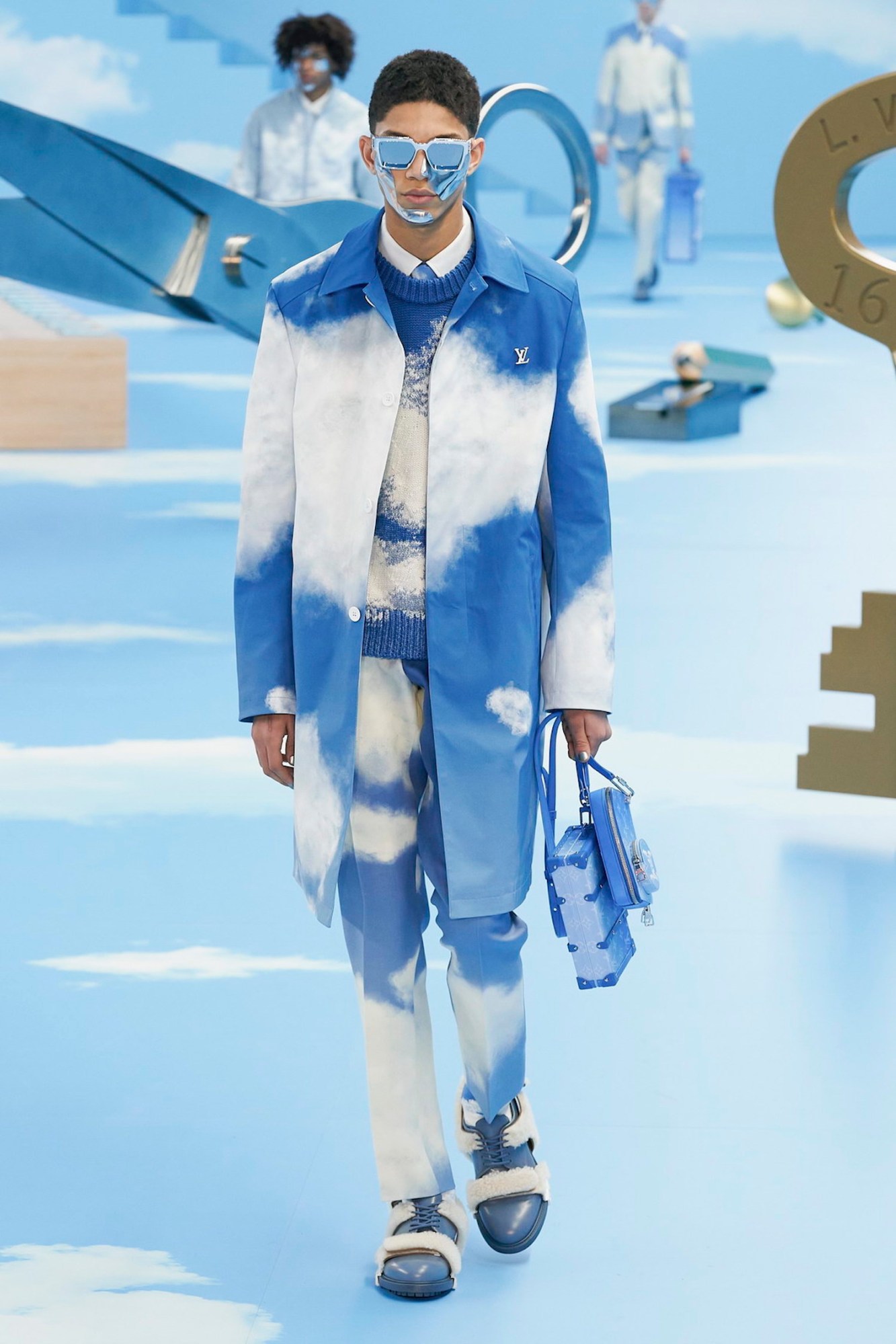The invitation to the Louis Vuitton menswear show was a clock that ticked backwards, telling the time on LV logos instead of numbers. It hinted at what was to come: a literal and figurative turning back of time. At the show it became clear that it wasn’t necessarily a rewind to a specific time or era — but to the universal nostalgic warmth of childhood. The show space was covered entirely in blue skies and fluffy Magritte-like clouds, the floor dotted with huge versions of a tailor’s tools: a giant ruler as a bench, or a Brobdingnagian roll of thread and sewing pins scattered around a tree. It had a cartoonish kitsch to it, the fashion equivalent to Disneyland. This is what Alice must have felt like in Wonderland. Had she had Instagram, she would have found endless amusement taking selfies, and may never found have her way back out of the rabbit hole.
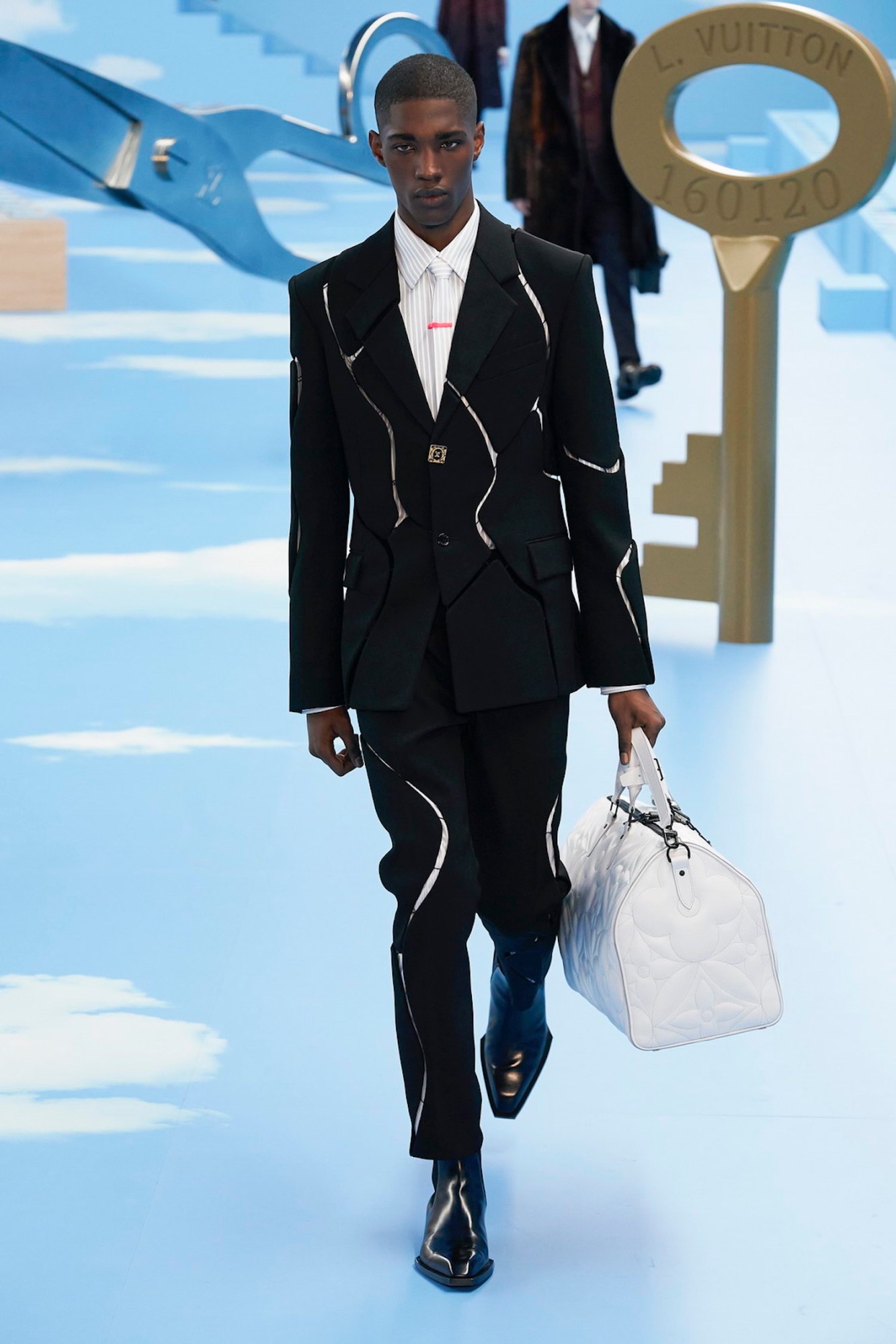
It tapped into a cultural notion receiving increasing attention at the moment: boyhood. A generation of men, including Virgil Abloh, have come of age in a world that has dramatically shifted in terms of corporate codes, workplace attire and indeed the rules, expectations and conversations around masculinity. As a result, childhood and adolescence now seem to stretch out into adult life, least so because there are more grown-up versions of childlike things, whether that’s video games, cartoons or very expensive collectable branded memorabilia. Fashion is the ultimate boy’s toy. The men at the Louis Vuitton show, resembling grown-up Action Men in leather harnesses and monogrammed camouflage, were testament to that idea of living your best childhood life. You can see why it’s such a seductive prospect for the actual children lining the Tuileries gardens on the way into the show — and why they’re all obsessed with the universe that Virgil has created for Louis Vuitton menswear.
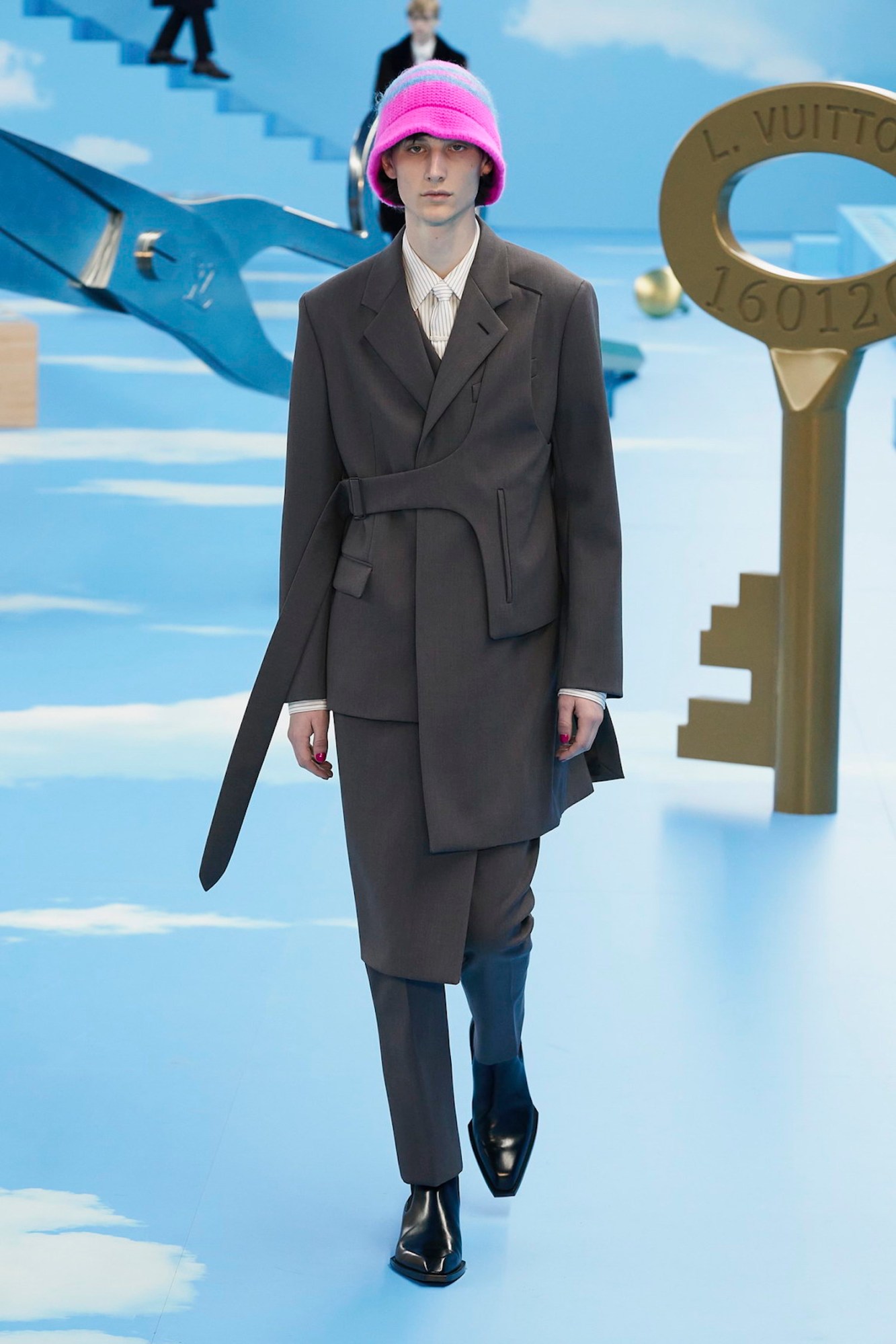
“Gazing at the world through the optics of a child – of an adolescent or a young man – is tantamount to first impressions, to the purity of mind and the refreshing optimism of naivety,” read the show notes. The collection itself was less about the symbols of youth, and more about a youthful perception of getting old. It tapped into that childhood fascination with adult things, of one day getting a job, going to an office and wearing a suit and tie. So of course tailoring was the benchmark, reinterpreted in myriad ways. Retro corporate dress codes — do they still even exist? — were reimagined in slim silhouettes, twisted here and there with renewed energy. Classical greige blazers came with the signature Virgil-Vuitton harnessing inbuilt, worn with abbreviated high-waisted trousers and pointy Chelsea boots — sometimes with vests or luscious fur coats over them, always with a skinny tie neatly pinned down. “I’m not about rejecting the corporate system — I’m about claiming it in and twisting it,” said Virgil.
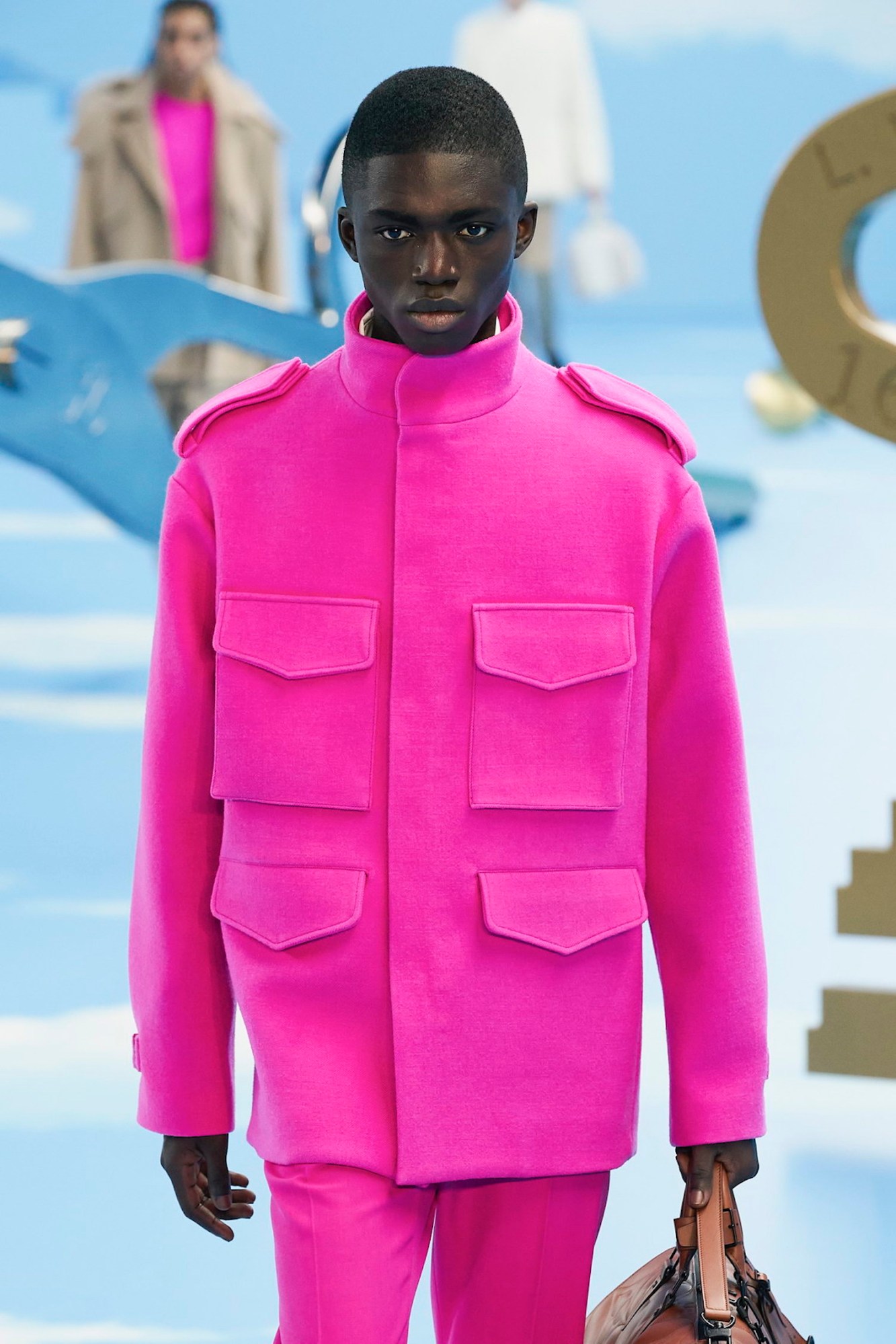
It was possibly his best collection yet, making a compelling case for the clean, familiar lines of classical menswear for a generation of men who probably don’t own a tie. The final parts of the show had extravagantly ruffled shirts and suits smattered with stardust embellishment or cast entirely in that cloudy Magritte blue sky. There’s fun to be had in those clothes, not just the monotony of a serious office job. For the kids who will undoubtedly be looking at this collection, that’s a powerful message: you can be whatever you want to be, do whatever you want, dress however you please — the sky is the limit.
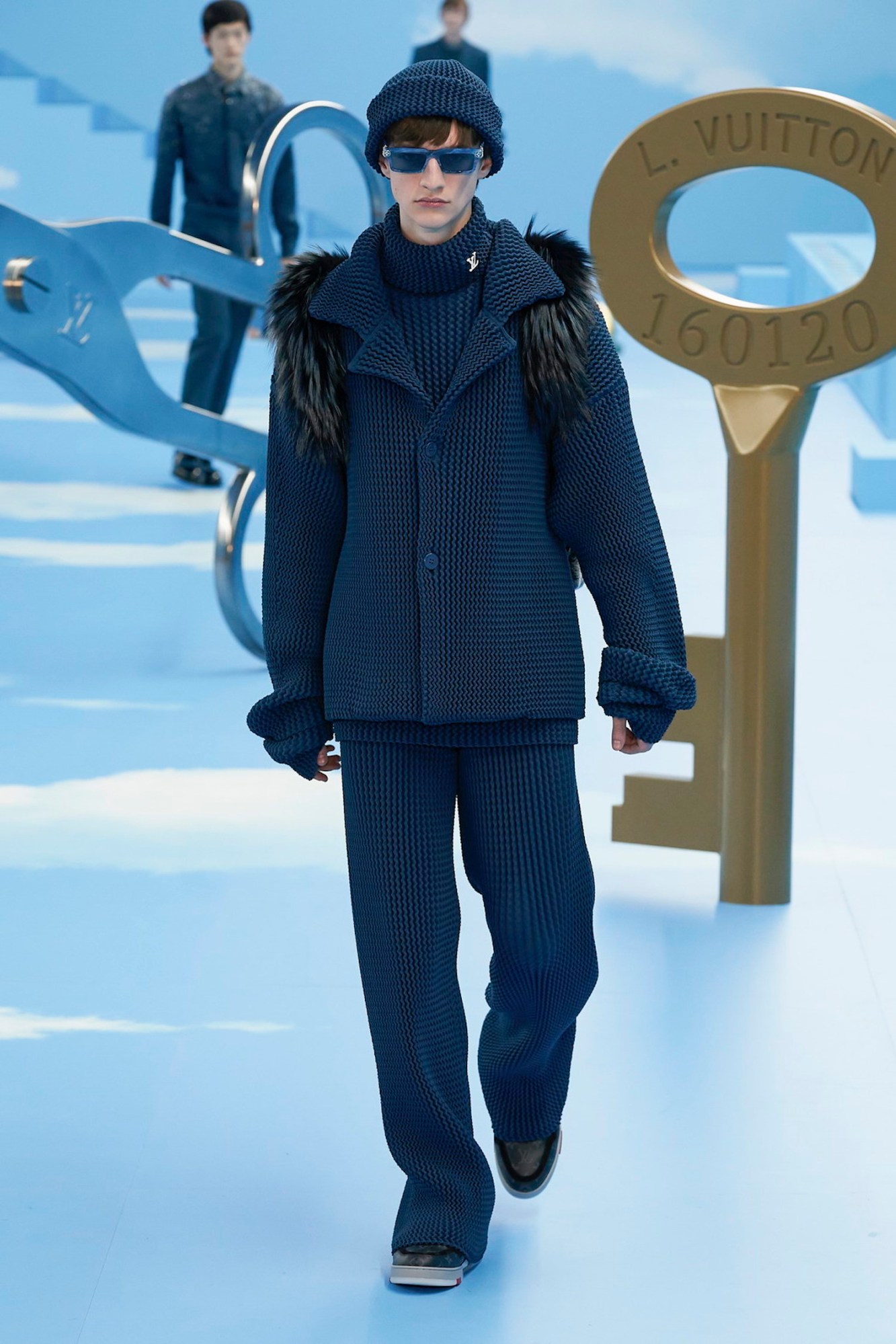

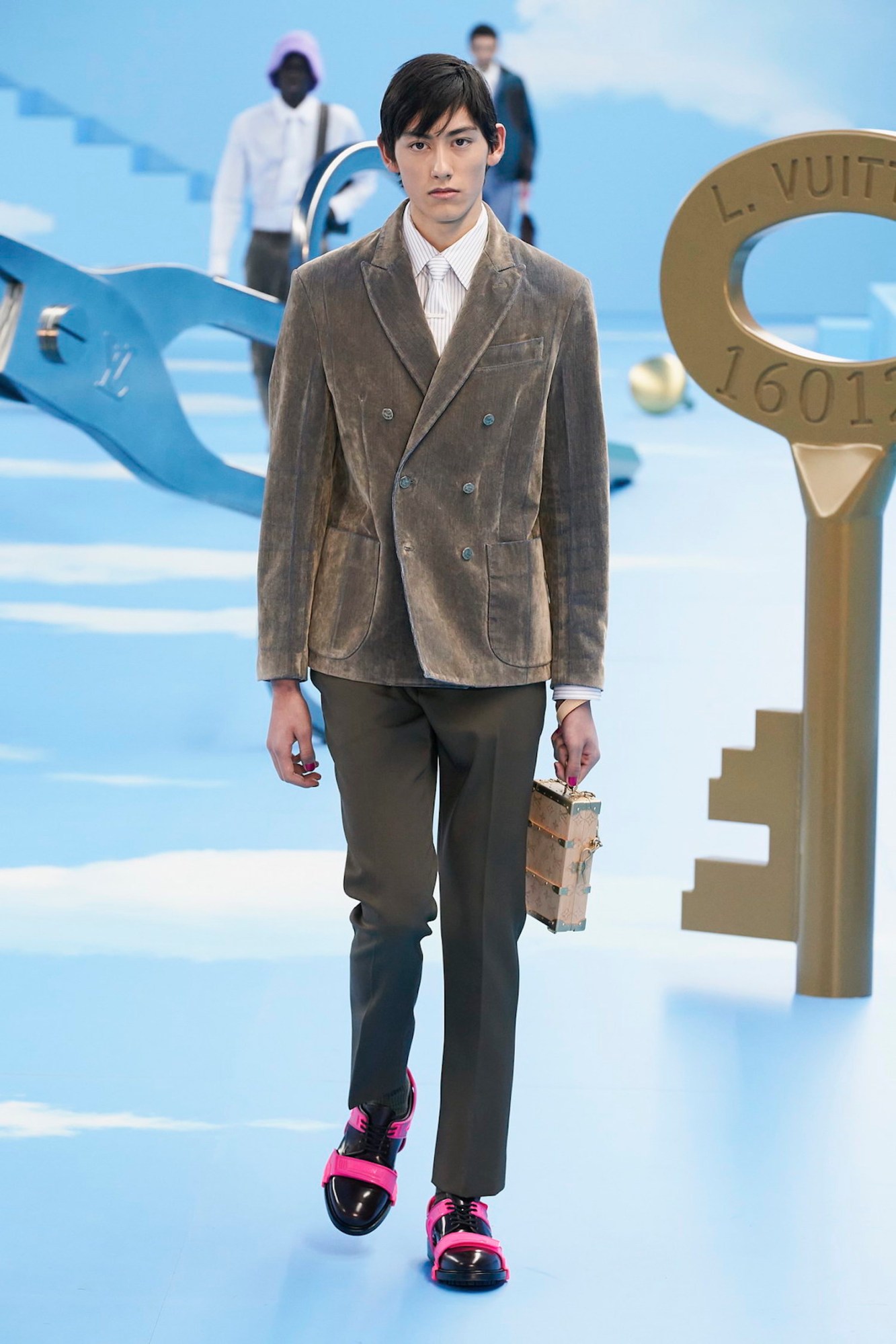
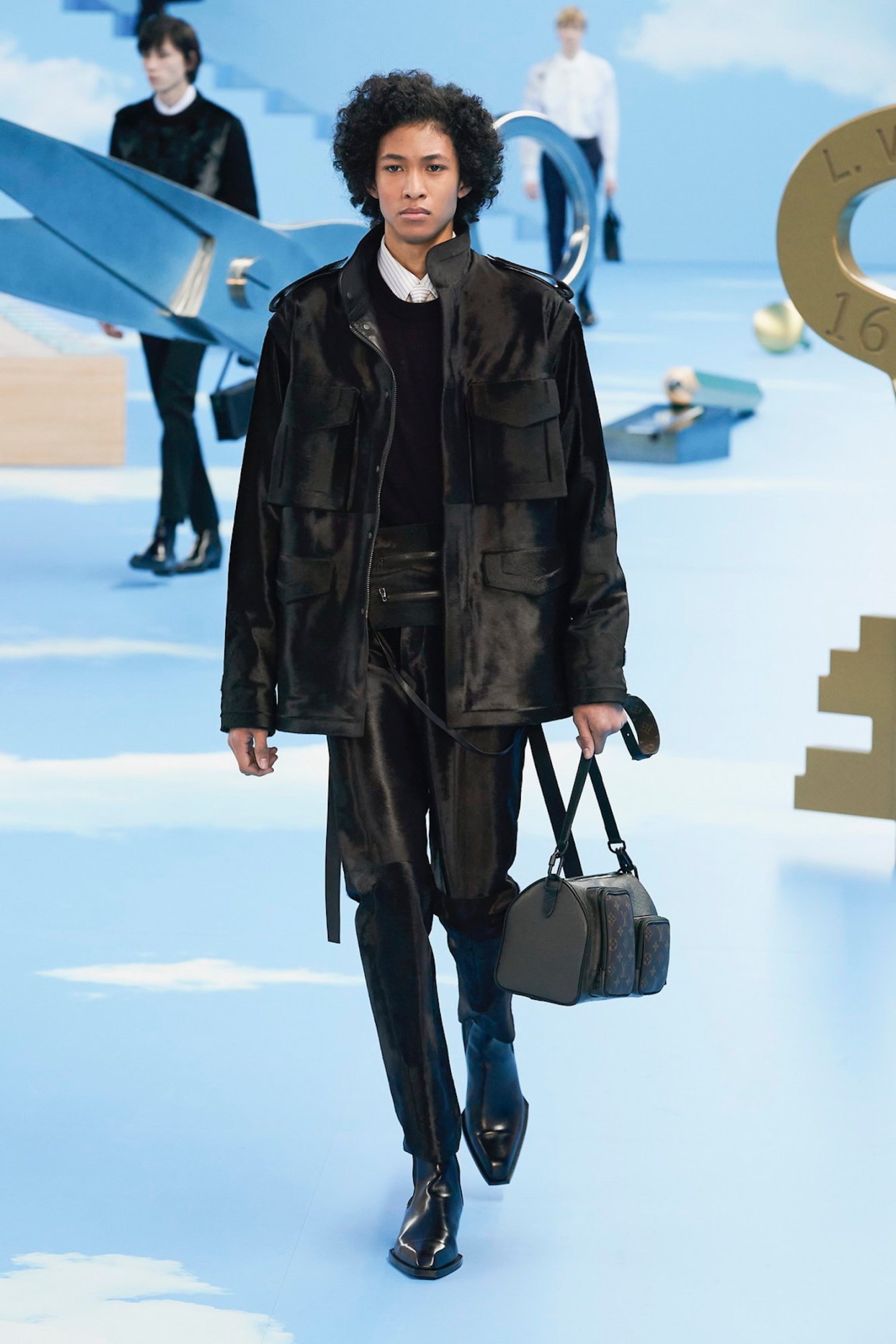
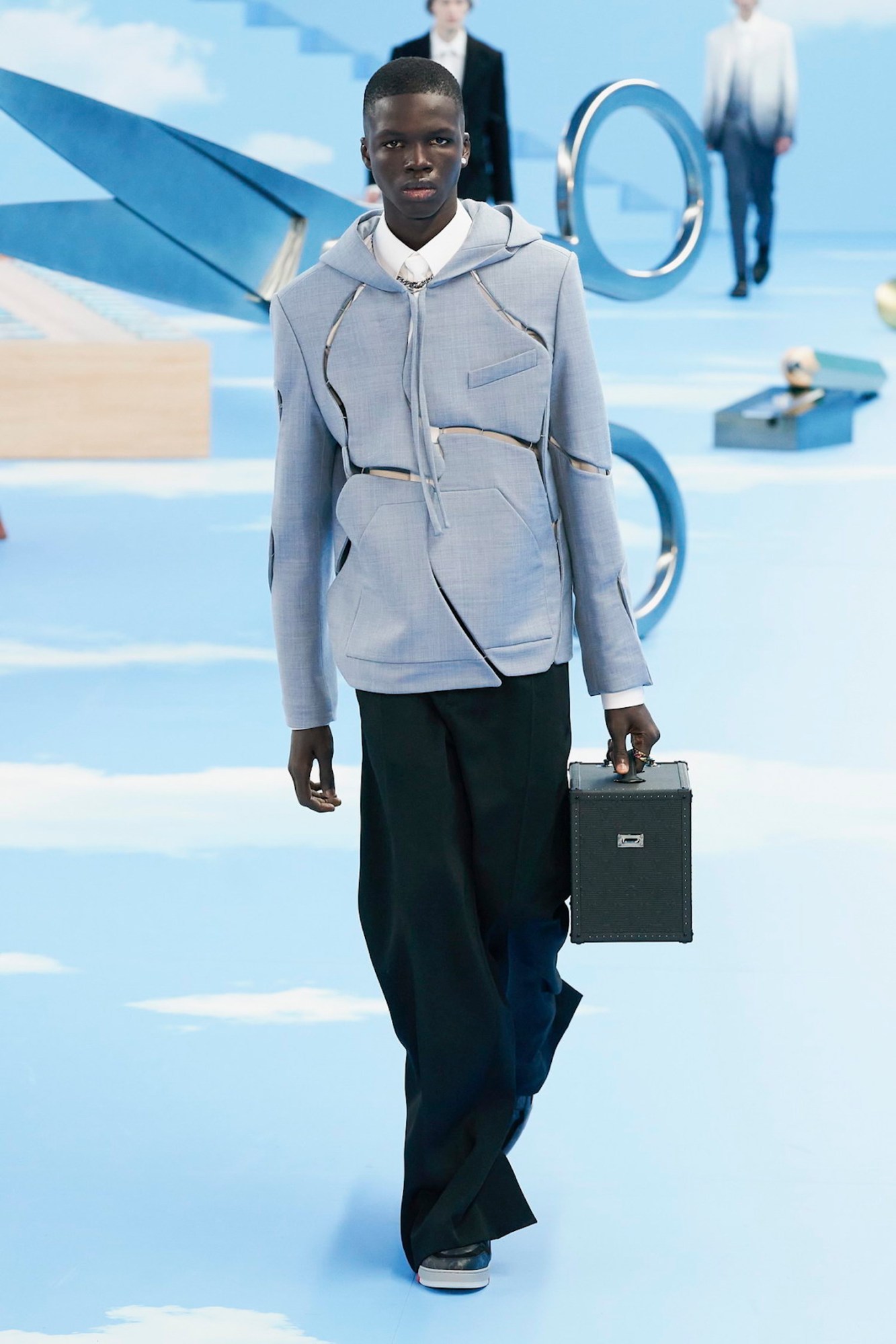

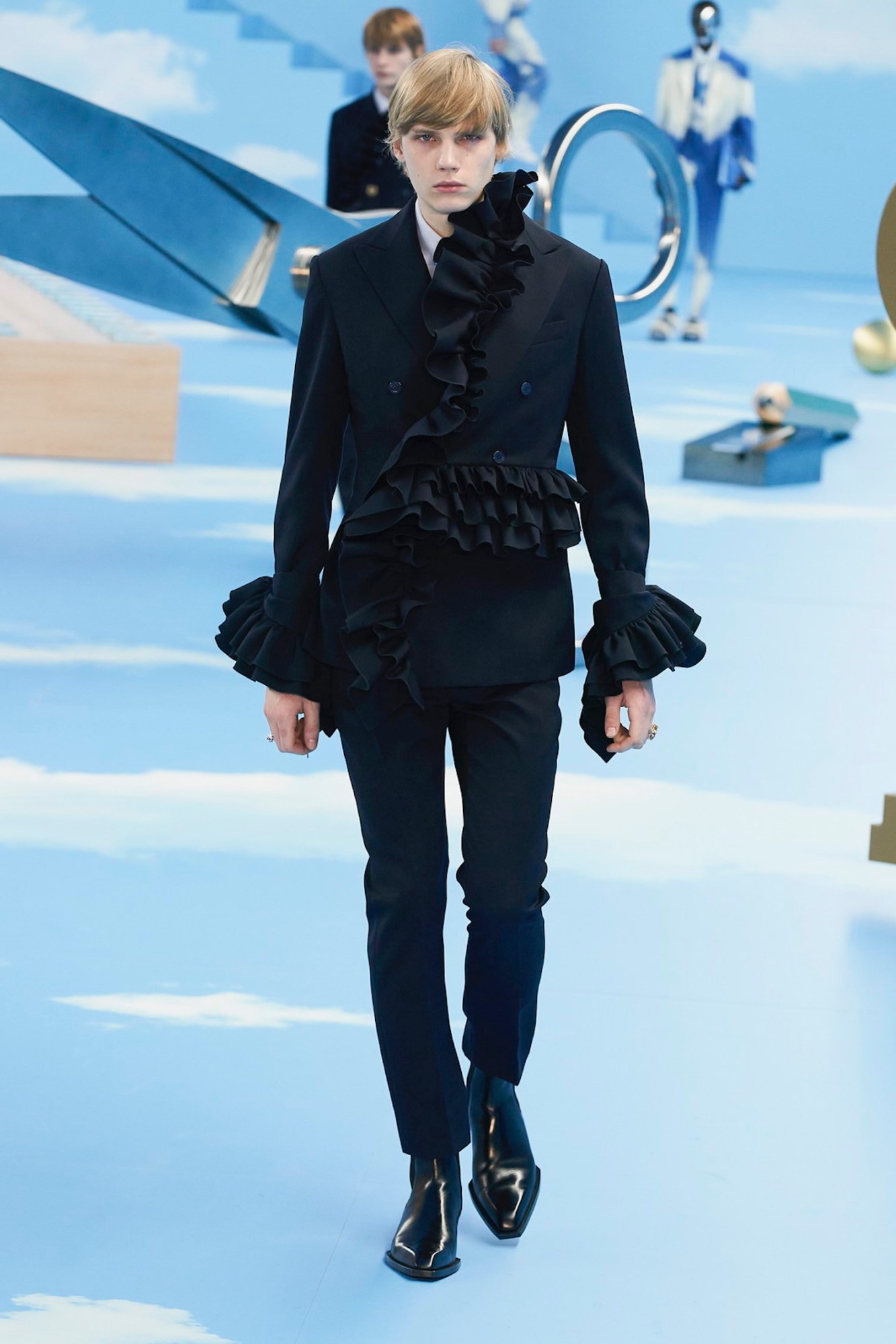
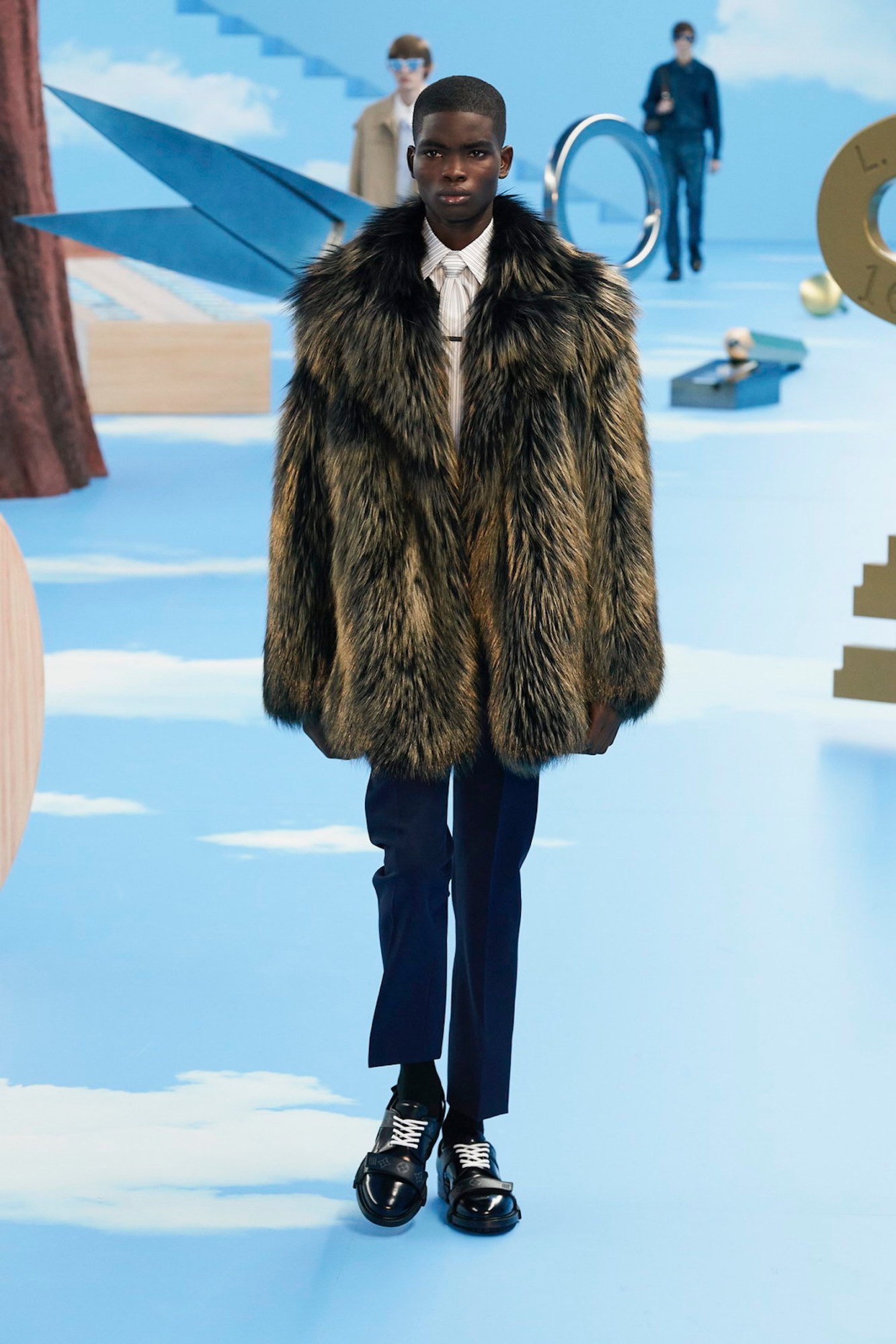
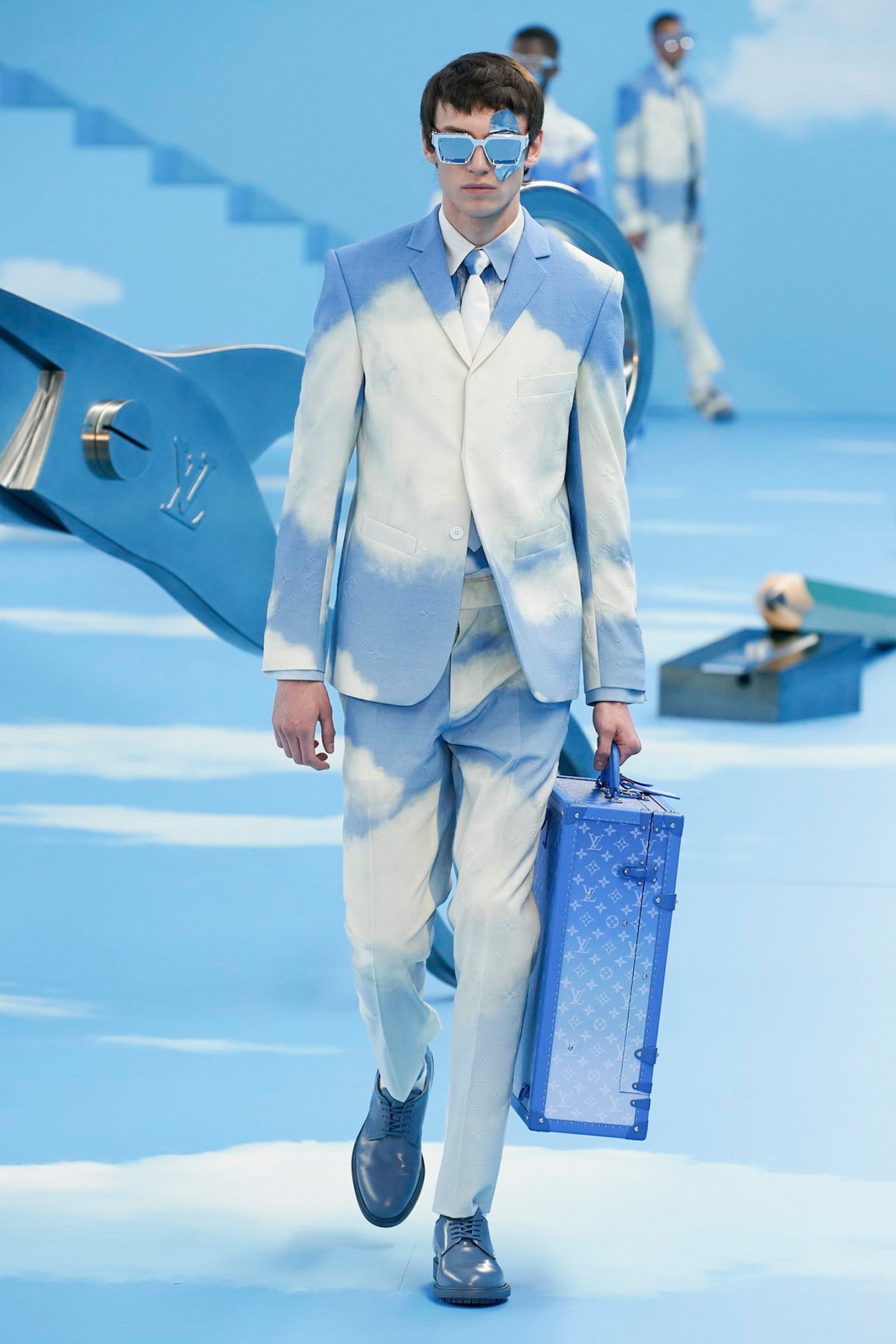
Credits
Photography Mitchell Sams
